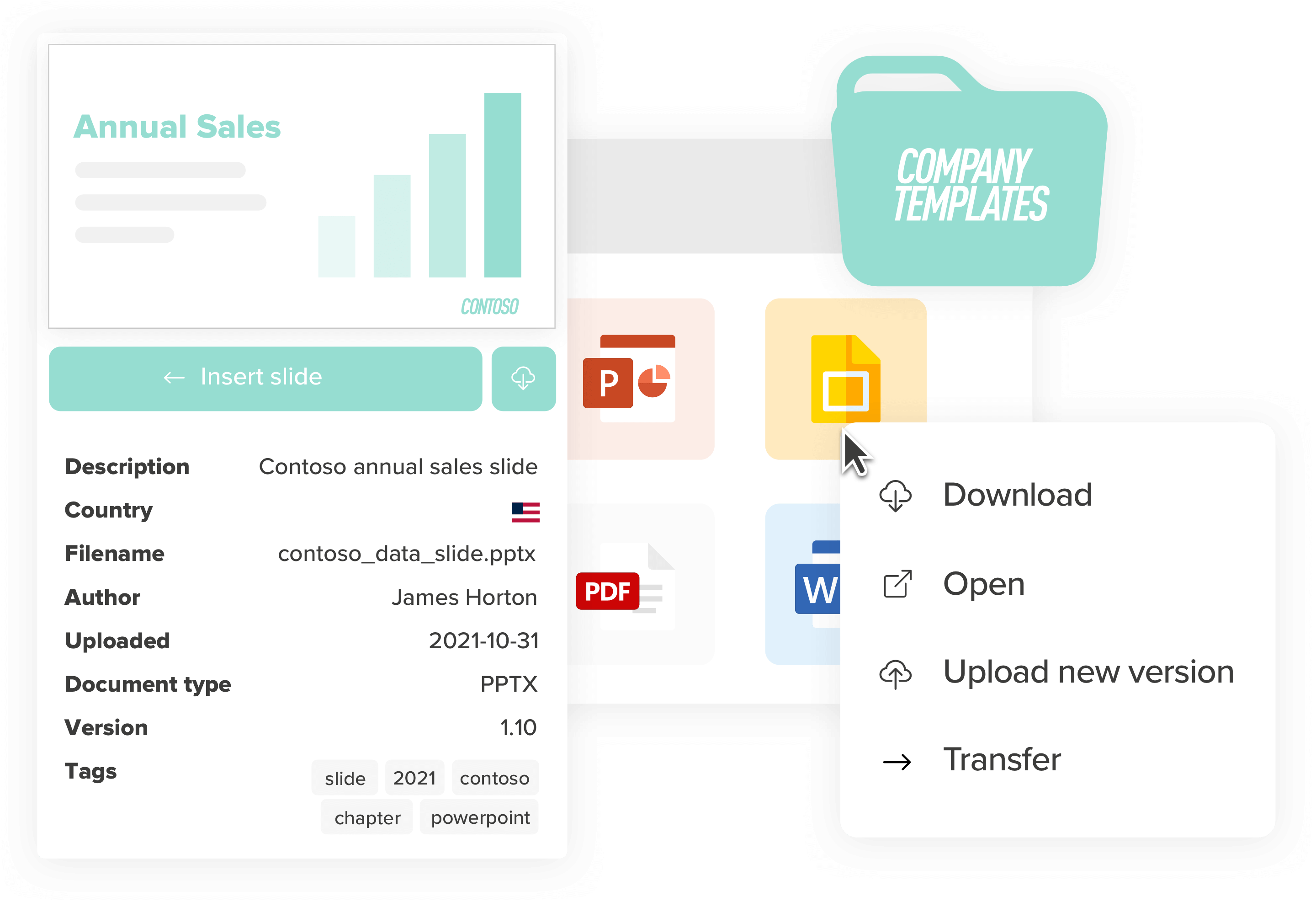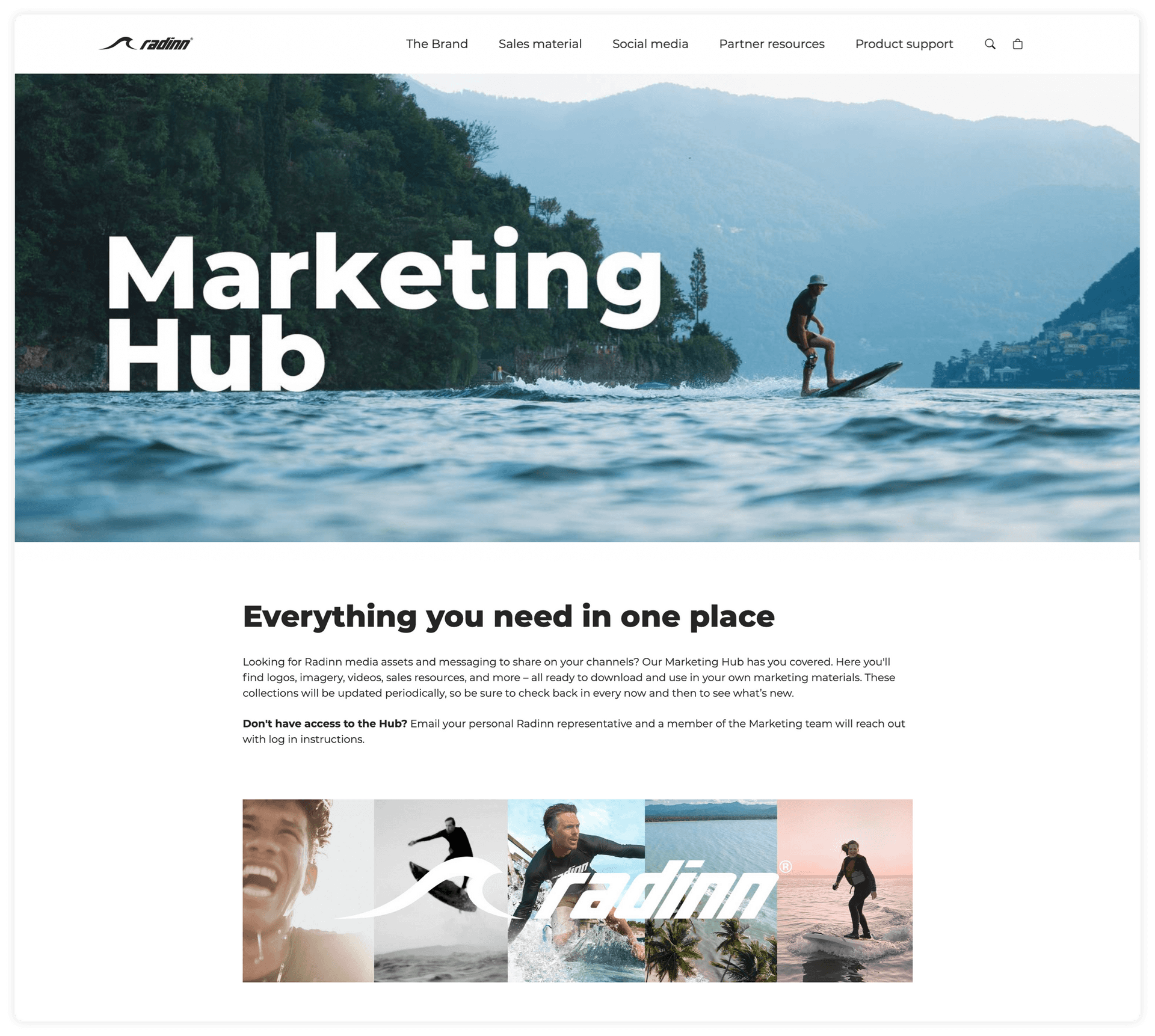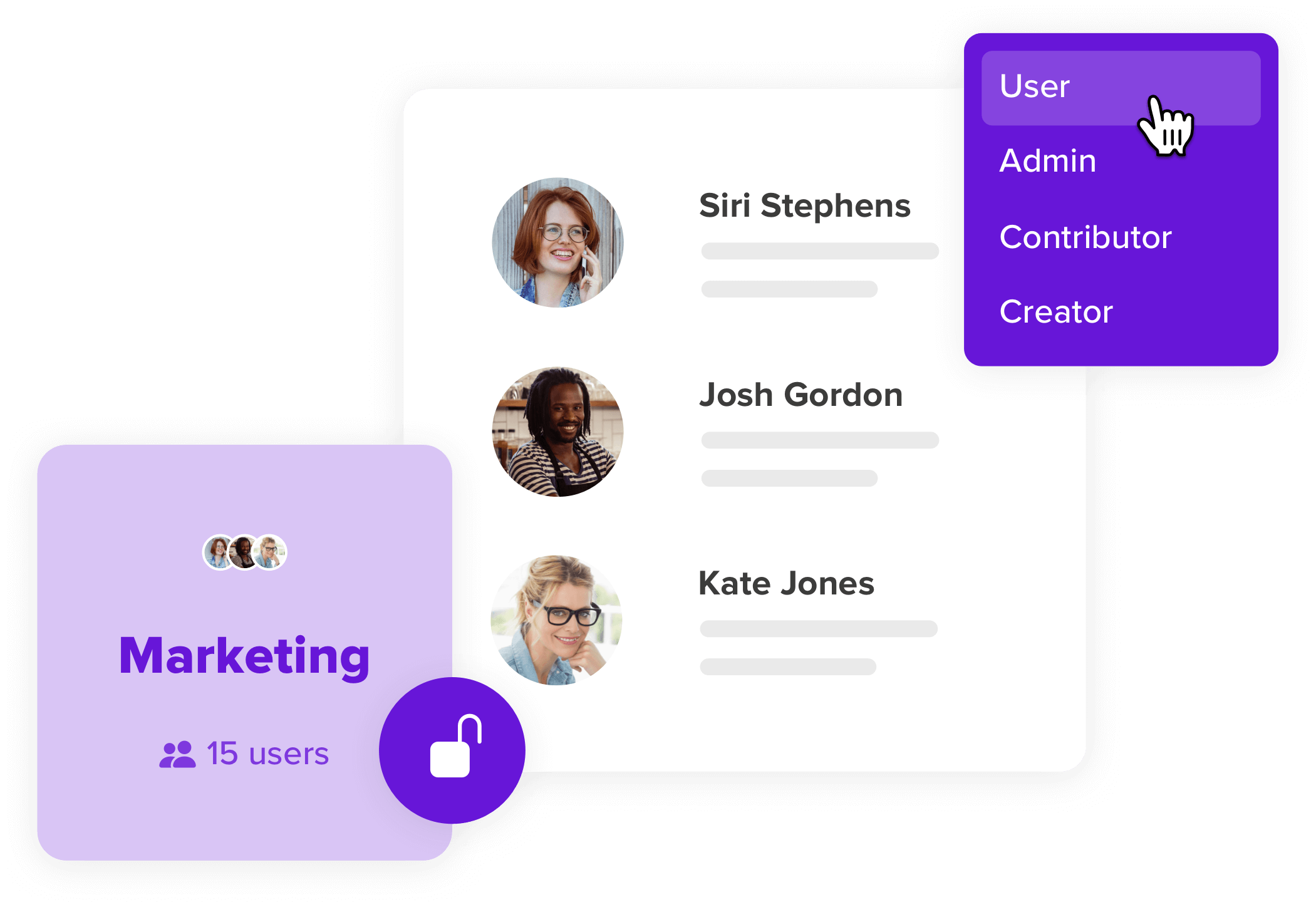PICKIT
What is Digital
Asset Management?
Discover the power of Digital Asset Management (DAM).
Streamline content organization, collaboration, and brand consistency.
Digital Asset Management (affectionately known as DAM) refers to a system or platform providing one single source of truth for organizations looking to store, share, organize, optimize, analyze, and distribute content. This can include brand assets, documents, templates, guidelines and more. With a centralized DAM system, administrators and users can have controlled access to their entire digital content library.
Featured Articles
Here at Pickit, we're curious minds. We've built a collection of the most frequent topics so you can become an expert in all things digital asset management & marketing.
Pick your favorite here →
What are the benefits of digital asset management software?
Quick and easy collaboration
Even the smallest startup needs external help with marketing every now and then. An asset management system lets you store everything in one place. Whether you’re collaborating with employees, contractors, or vendors, one link gives the right people access to the right materials.
Improved discoverability
You put money and resources toward creating marketing assets. But that hard work can pay off for many years. There might be graphics, copy, or images you can repurpose later. Even better, you can grab licensed stock photos while they’re on sale and store them for later use.
Many digital content management solutions incorporate search features that allow your team to input keywords. You can tag and filter media based on clients, projects, media type, and more, ensuring you maximize each asset's use.
Better marketing ROI
With DAM reporting features, you can understand how your visual content is working for you by automatically tracking the usage of your assets, keeping you up to date on how often your team is using those pieces so you can justify spending money on similar content creation in the future.
Digital asset management solutions also allow you to direct team members to underused content. Admins can spotlight certain pieces of content each month in featured collections and ensure the team incorporates them into social media posts, articles, brochures, or paid ads.
Learn how to save days and boost your marketing ROI with DAM.
Time savings
Bouncing drafts between team members is time-consuming at best and risky at worst. You can find that you have multiple versions of the same asset, causing delays as you try to straighten everything out. Digital asset management platforms typically give you a central place to pass drafts and versions around. Team members can log in, look at others’ work, and issue approvals as necessary. If someone needs access to those assets to repurpose them for another application, you’ll also have a central repository for that.
Native integrations
You can seamlessly connect a digital asset management solution with various technology tools, encompassing your content management system (CMS) and product information management (PIM) systems, alongside design and social media plugin utilities. This integration fosters a streamlined progression of digital assets throughout the entire content lifecycle, starting with the initial briefing and extending all the way to distribution. This significantly enhances operational efficiency.
Always ON brand
An asset management system has the added benefit of housing your content briefs. Marketing team members can get everything they need on a project in one place. If you have team members or contractors helping with your SEO research, they can collaborate on keeping those briefs up to date.
Safeguarding compliance
Ensure you’ve secured all the copyright and license info necessary to use your content. Not only that, but you can also store attribution information and licenses alongside the original media. For example, you can easily credit the creator when you post user-generated content or add royalty-free music to a video – link to the compliance page

What does a digital asset management solution actually do?
A digital asset management system is a lot like a filing cabinet. If provides a central depository for your content, with a Content Administration Tool where owners, admins, and curators can upload and organize assets, invite users, manage licenses, regulate permissions, and much more.
Integrations and APIs enable admins to connect the system to various third-party platforms including cloud storage systems and stock photo services including Dropbox, Box, Getty Images, and Adobe Stock. You can also quickly connect to applications including Microsoft Teams, PowerPoint, Word, Google Slides and more. Those managing the DAM system can also decide what content is made available in which channels, and choose whether material is made available to all users, or regulate access based on the needs of different departments, teams, and individual users.
Explore Best Dropbox Alternatives for Your Marketing Department in 2023
Radinn Streamlines Distribution Using Pickit Brand
Radinn was experiencing explosive growth, and its network of business partners was increasing rapidly. They quickly realized there was no simple way to get an overview of the files and browse content, and it was hard to keep the material up to date and organized.


Is a DAM solution part of MarTech?
The short answer is Yes, it is. A digital asset management solution is indeed a part of marketing technology (MarTech). DAM refers to the process and tools used to store, organize, manage, and distribute digital assets such as images, videos, documents, and other media files.
In the context of marketing, DAM solutions play a crucial role in streamlining and optimizing the management and distribution of documents and visual assets, thereby facilitating marketing collaboration and efficient handling of marketing content. These solutions provide a centralized repository where marketers can store and organize their brand assets, ensuring easy access and seamless collaboration among team members.
By utilizing a DAM solution as part of their marketing technology stack, organizations can enhance:
- Marketing operations
- Improve asset utilization
- Expedite content creation
- Maintain brand integrity across various channels and campaigns
DAM solutions offer features like metadata management, version control, search capabilities, rights management, and asset sharing, enabling marketers to quickly locate and retrieve assets, foster effective marketing collaboration, and ensure consistent usage and licensing of marketing content.
Control your content from one central space
Gather scattered digital assets and organize them all in one place – then optimize your library based on usage data and demand.
- Store and sort your assets in one central platform
- Gather, index, and manage your company documents and templates from a single control panel
- Add your assets, colors, fonts, and style guides

When do I have a digital asset management business case?
Growing volume of digital assets
If your organization generates and utilizes a large number of digital assets such as images, videos, audio files, documents, or other media, a DAM solution can help you effectively manage and organize them.
Inefficient asset retrieval and sharing
If your marketing team struggles with locating and sharing assets in a timely manner, resulting in wasted time and resources, a DAM solution can provide a centralized repository with robust search capabilities, making it easier to find and share assets efficiently.
Inconsistent branding and messaging
If you experience challenges in maintaining brand consistency across marketing channels, campaigns, or teams due to the lack of a centralized asset management system, a DAM solution can help ensure that the right assets are used consistently, and brand guidelines are followed.
Collaboration difficulties
If your marketing team works in a distributed or cross-functional environment, where multiple team members or external stakeholders need to access and collaborate on marketing assets, a DAM solution can facilitate seamless collaboration, version control, and approval workflows.
Legal and compliance concerns
If your organization needs to manage rights and usage restrictions for assets, ensuring compliance with licensing agreements or regulatory requirements, a DAM solution can provide features to track usage rights, permissions, and expiration dates.
Time-consuming content creation
If your marketing team spends significant time recreating or modifying existing assets because they are unaware of their availability or cannot easily repurpose them, a DAM solution can streamline content creation processes by enabling asset reuse and repurposing.
Increased need for personalization and localization
If your organization operates in multiple markets or serves diverse customer segments that require localized or personalized marketing content, a DAM solution can help manage and distribute assets tailored to specific regions, languages, or target audiences.
When faced with any of these challenges, developing a digital asset management business case becomes crucial as it outlines the benefits and return on investment (ROI) of implementing a DAM solution. It highlights the potential cost savings, improved productivity, enhanced brand consistency, streamlined workflows, and other advantages that can be achieved by adopting a DAM system in your marketing operations.
"Pickit is very simple to deploy and use in our organization. As we have operations in both Europe and US, it is a simple and nimble way to keep track of the pictures and templates we have as standard in our company.

See how Pickit can
help your organization
product specialists today.